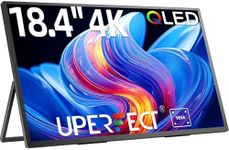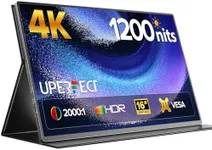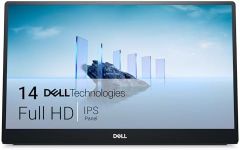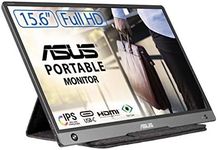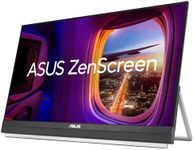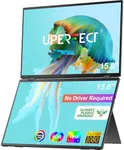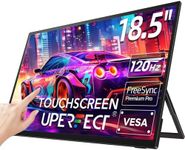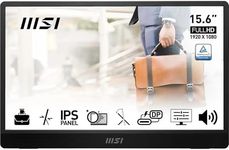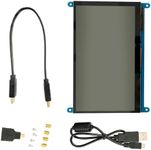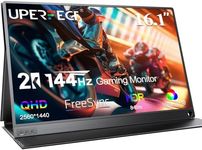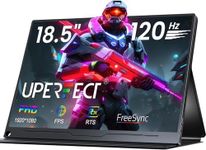Buying Guide for the Best Portable Monitor
When choosing a portable monitor, it's important to consider how you plan to use it. Whether you're looking for a second screen for work, a display for gaming on the go, or a way to watch movies while traveling, the right portable monitor can enhance your experience. Focus on the specifications that align with your primary use case to ensure you get the best performance and value.Screen SizeScreen size refers to the diagonal measurement of the display area. It's important because it affects both the portability and usability of the monitor. Smaller screens, typically around 12 to 14 inches, are more portable and easier to carry around, making them ideal for frequent travelers. Larger screens, ranging from 15 to 17 inches, offer more screen real estate, which can be beneficial for multitasking or detailed work. Consider how much space you need for your tasks and how often you'll be carrying the monitor.
ResolutionResolution indicates the number of pixels on the screen, affecting the clarity and detail of the display. Common resolutions include Full HD (1920x1080), which is suitable for most tasks, and 4K (3840x2160), which offers sharper images and is ideal for high-definition content and detailed work. If you need a monitor for basic tasks like browsing or document editing, Full HD is usually sufficient. For graphic design, video editing, or gaming, a higher resolution like 4K might be more appropriate.
ConnectivityConnectivity refers to the types of ports and wireless options available on the monitor, which determine how you can connect it to other devices. Common connections include USB-C, HDMI, and sometimes DisplayPort. USB-C is popular for its versatility and ability to transmit power, data, and video through a single cable. HDMI is widely used for connecting to laptops and gaming consoles. Consider the devices you plan to connect and ensure the monitor has compatible ports. If you prefer fewer cables, look for models with wireless connectivity options.
WeightWeight is a crucial factor for portability, as it affects how easy it is to carry the monitor around. Lighter monitors, typically weighing under 2 pounds, are easier to transport and are ideal for users who travel frequently. Heavier models might offer more features or a larger screen but can be cumbersome to carry. Consider how often you'll be moving the monitor and choose a weight that won't be a burden.
Battery LifeBattery life is important if you plan to use the monitor without a constant power source. Some portable monitors come with built-in batteries, allowing for several hours of use on a single charge. This is particularly useful for outdoor work or travel. If you need a monitor for extended periods without access to power, look for models with longer battery life. Otherwise, if you mostly use it near a power outlet, battery life may be less of a concern.
BrightnessBrightness, measured in nits, affects how well the screen can be viewed in different lighting conditions. Higher brightness levels, typically above 300 nits, are better for use in bright environments or outdoors. Lower brightness levels might be sufficient for indoor use. Consider where you'll be using the monitor most often and choose a brightness level that ensures clear visibility in those conditions.
